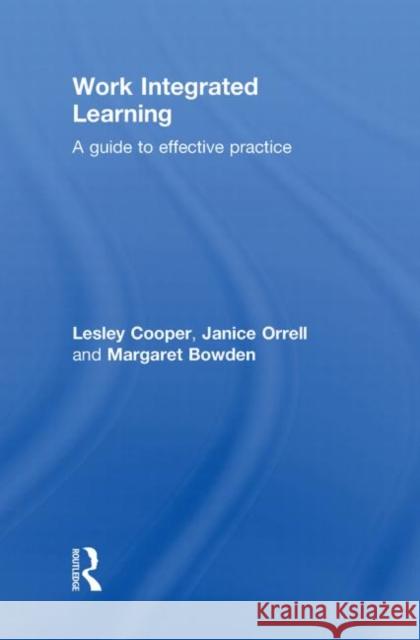Work Integrated Learning: A Guide to Effective Practice » książka
Work Integrated Learning: A Guide to Effective Practice
ISBN-13: 9780415556767 / Angielski / Twarda / 2010 / 224 str.
Work Integrated Learning: A Guide to Effective Practice
ISBN-13: 9780415556767 / Angielski / Twarda / 2010 / 224 str.
(netto: 600,21 VAT: 5%)
Najniższa cena z 30 dni: 579,30
ok. 22 dni roboczych
Dostawa w 2026 r.
Darmowa dostawa!
The demand for work-ready graduates, who are familiar with organizational practices in the workplace is increasing, and so the need for greater work integrated learning (WIL) is a growing concern for the education sector. With the globalization of higher education and the cultural and linguistic challenges this brings, WIL has become a core strategic issue for many organizations. Examining WIL as a process of integration between workplaces, higher education institutions, government, business and industry, this book includes:
- Strategies for managing work integrated learning experiences
- The what, when, where, why and who of WIL across professions
- Advice on building relationships between higher education and the workplace
- Guidance on preparing learners effectively for work
- Practical case studies from firsthand experience
- Direct information and instruction on the use of WIL
As employers increasingly seek work-ready graduates who are familiar with organisational practice, the need for work integrated learning (WIL) greatens. With the globalisation of higher education and the cultural and linguistic challenges this brings, WIL has become a core strategic issue to many organisations. How do we enable workplaces to assist students with learning practice and help higher education institutions work with government, business and industry to enable integration of learning?
This book takes a unique, practical, hands-on approach to the everyday activity of work integrated learning, addressing the topic through both direct instruction and case studies derived from actual experience. It provides strategies to simplify management of work integrated learning experiences, and explores the what, when, where, why, who and how of the concept across many professions. It contains exercises that will assist and encourage employers, students and staff responsible for the organisation of WIL.
Work Integrated Learning is a practical guide that can be used by the education sector and employers alike. Vitally, it is an integrated resource, as applicable to employees as to readers in the education sector. It will also appeal to pro-Vice Chancellors of teaching and learning, WIL coordinators, careers services, and all those involved with standards and competency.











